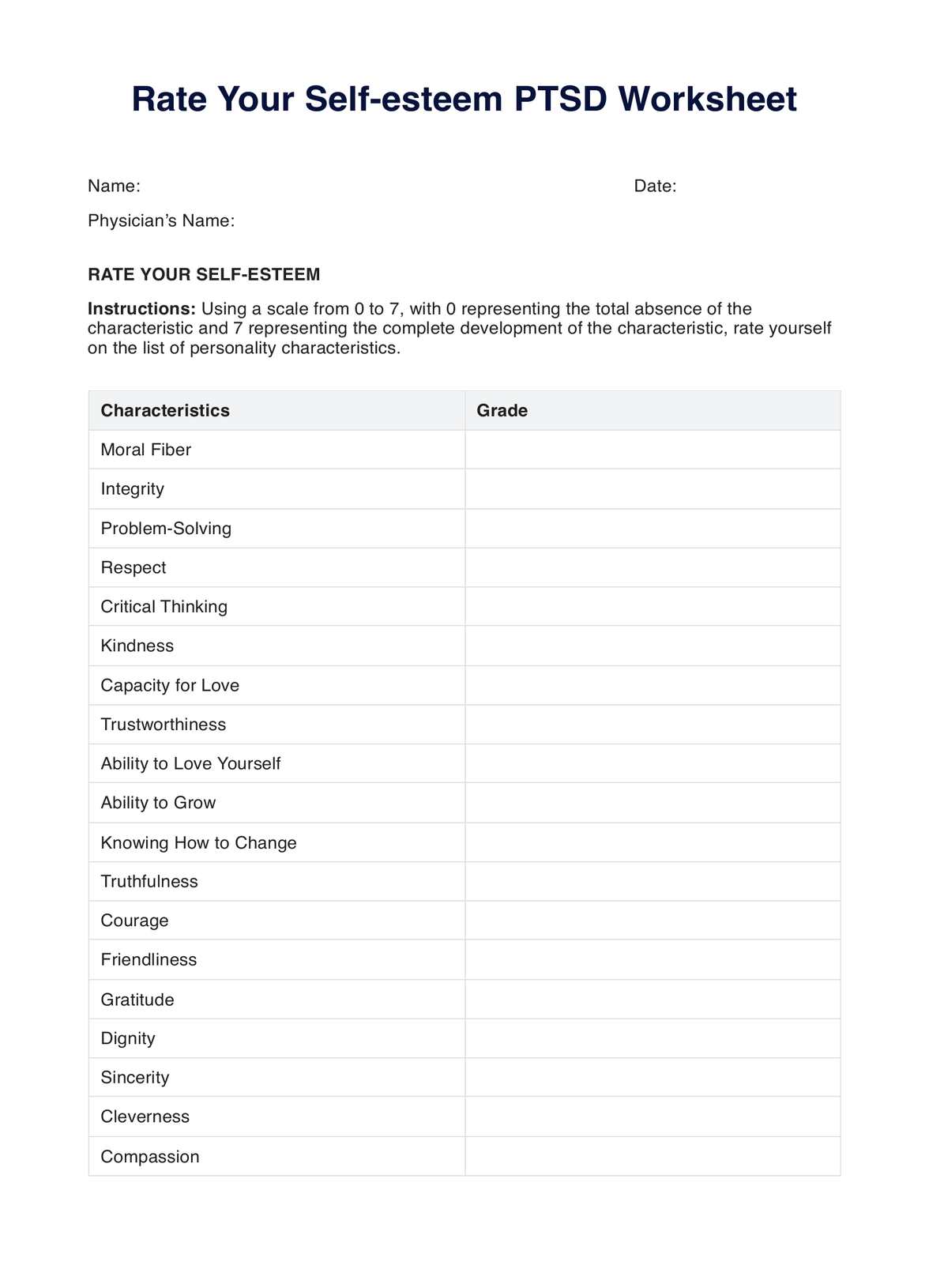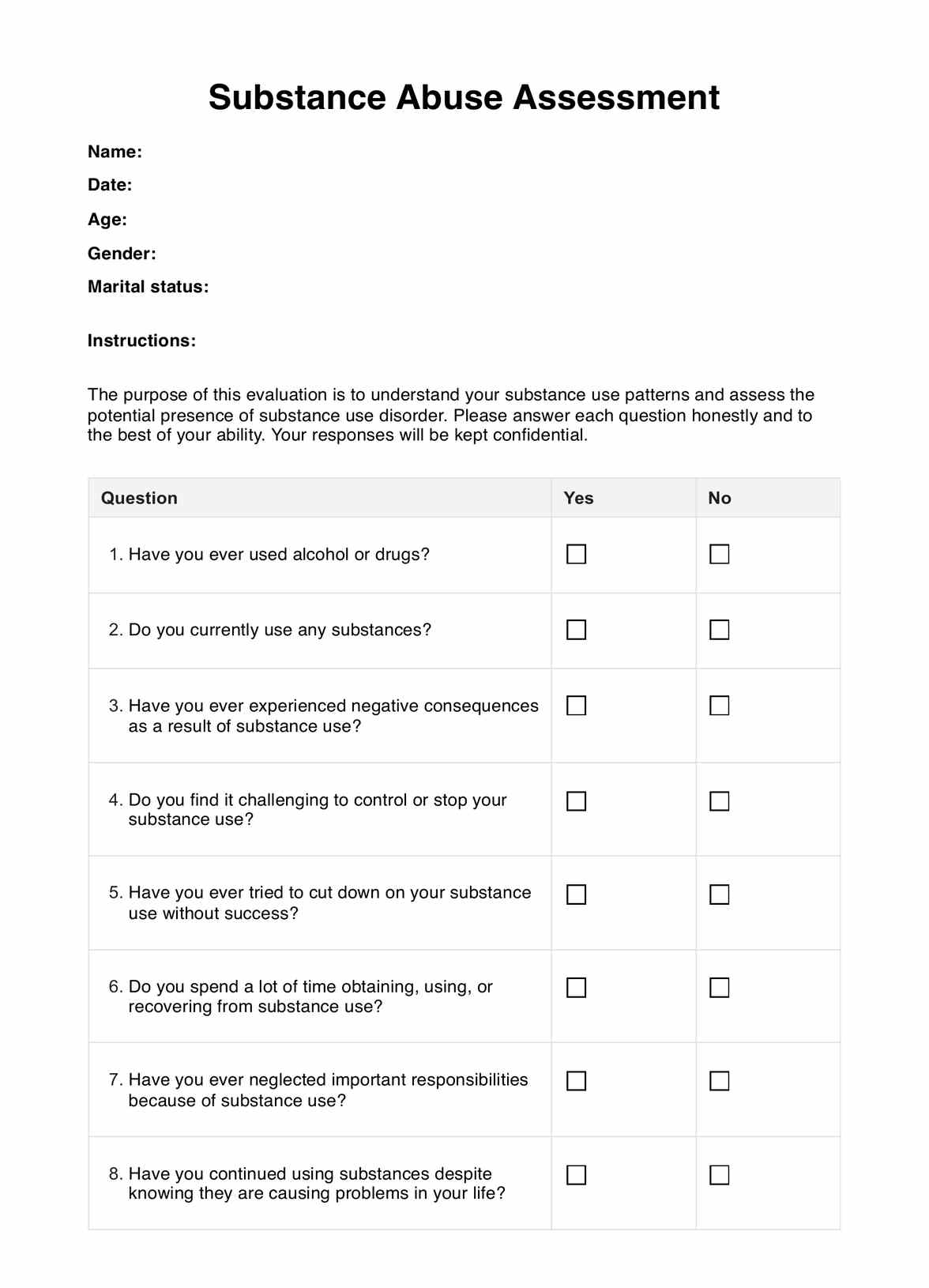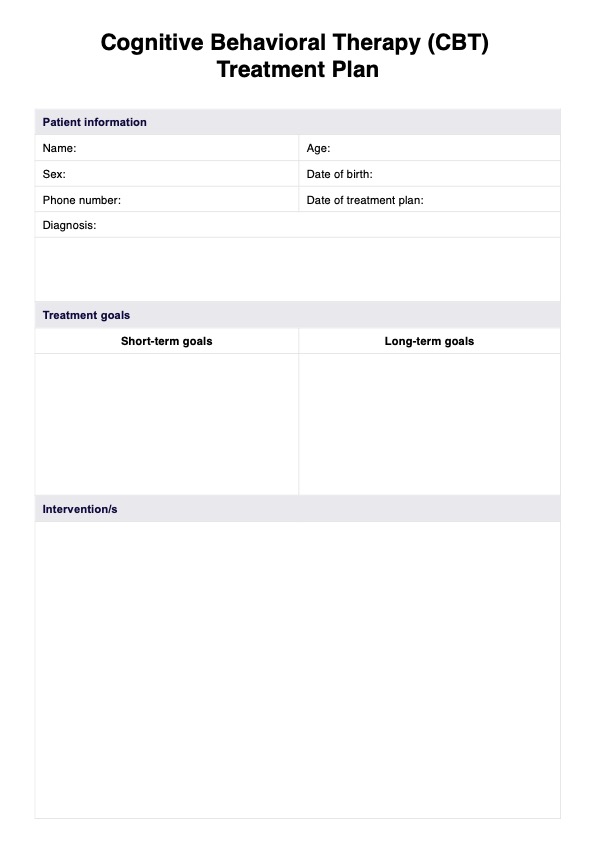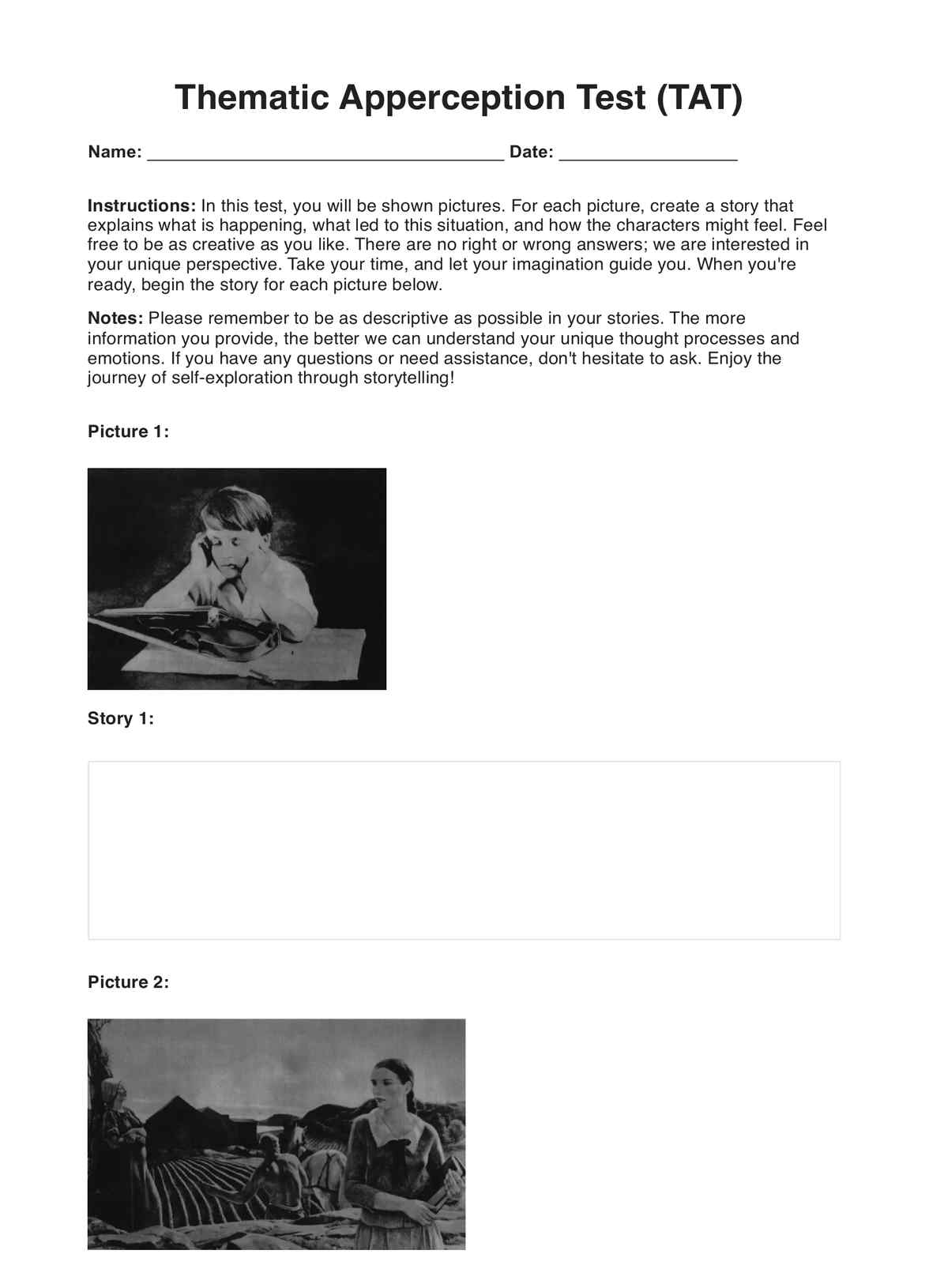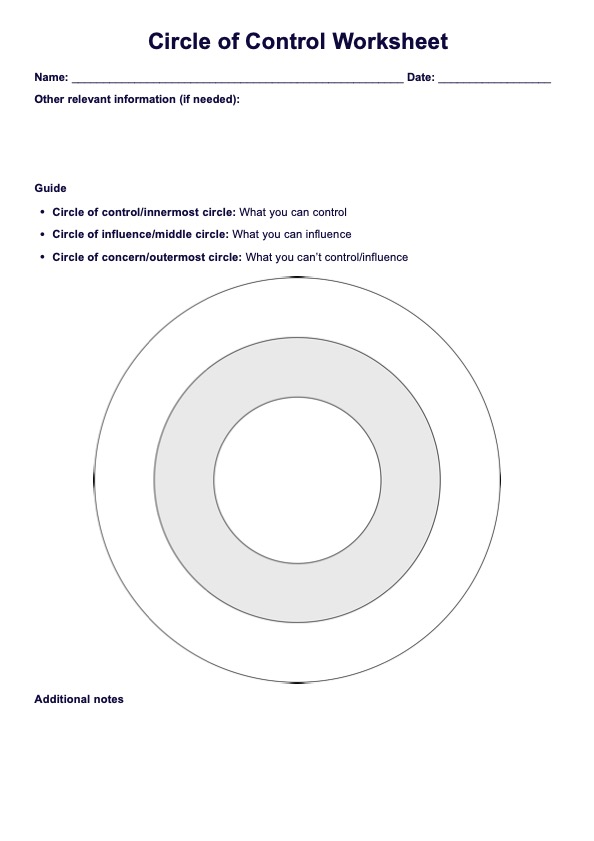Eating Disorder Worksheet
Explore our complete guide on the Eating Disorder Worksheet, its usage, benefits, & seamless integration with Carepatron's powerful healthcare software.


What Is an Eating Disorder Worksheet?
An Eating Disorder Worksheet is a valuable tool healthcare professionals use to identify, evaluate, and manage the emotional, psychological, and physical challenges individuals with eating disorders face. These worksheets provide a framework for understanding the complex emotions, thoughts, and behaviors linked with eating disorders such as Anorexia Nervosa, Bulimia Nervosa, and Binge Eating Disorder, among others.
Providing a set of reflective questions, thought logs, and behavior-tracking fields, these worksheets encourage patients to explore their attitudes toward food, body image, and self-worth. They guide the patient in recognizing distorted thinking patterns, challenging negative self-perceptions, and developing healthier coping mechanisms.
The Eating Disorder Worksheet is a tool for understanding and an instrument for change. By illuminating the multifaceted aspects of an eating disorder, it forms a stepping stone toward recovery, helping individuals reclaim control over their eating behaviors and improve their mental health.
As a healthcare professional, using an Eating Disorder Worksheet can enrich your understanding of your patient's struggles and progress. It can provide insight into triggers, emotional responses, and coping strategies, enabling more targeted and personalized interventions.
Dive into our guide, explore a sample worksheet, and access your free PDF download to start leveraging the power of the Eating Disorder Worksheet in your practice. The journey toward recovery can be challenging, but it's possible with the right tools and resources.
Have a look at our video on an Eating Disorder Questionnaire to find out more about these types of resources:
Eating Disorder Worksheet Template
Eating Disorder Worksheet Example
How Does It Work?
The Eating Disorder Worksheet provides a comprehensive evaluation tool for healthcare professionals working with patients potentially struggling with eating disorders. The step-by-step process in its application is straightforward, allowing for a holistic understanding of the patient's lifestyle, habits, health history, and potential disorder symptoms.
Step 1: Initial Consultation
Upon identifying the potential presence of an eating disorder, the healthcare professional should introduce the purpose and benefits of the Eating Disorder Worksheet to the patient. It's essential to explain how this tool can aid their treatment and ensure the patient's comfort and understanding before proceeding.
Step 2: Patient Self-Completion
The healthcare professional provides the Eating Disorder Worksheet to the patient for self-completion. This is typically done at home, where the patient can take the time needed to answer the questions thoroughly and honestly.
Step 3: Review and Clarification
Once the patient has completed the worksheet, it should be reviewed together during a follow-up consultation. This allows for clarification and additional information that may not have been initially provided, facilitating a more in-depth understanding of the patient's condition.
Step 4: Analysis and Interpretation
The healthcare professional then analyzes and interprets the patient's responses. They might identify patterns, significant weight fluctuations, specific eating behaviors, and emotional responses that could indicate an eating disorder.
Step 5: Formulate a Treatment Plan
Based on the findings, a tailored treatment plan is developed. This could include psychotherapy, dietary education, medication, or a combination thereof.
The Eating Disorder Worksheet is critical in identifying and understanding a patient's potential eating disorder. By following these steps, healthcare professionals can help ensure they provide the most effective, personalized patient care.
When Would You Use This Template?
The application of our Eating Disorder Worksheet is vast, serving as a critical resource for healthcare professionals in various settings. Here are several circumstances where it would be suitable:
- Initial Assessment: This worksheet is an excellent starting point when a healthcare provider suspects an individual may struggle with an eating disorder. It can help identify potential symptoms and risk factors.
- Ongoing Tracking: This worksheet is valuable for tracking a patient's progress. The structured format makes documenting changes and trends in their behavior and physical health easy.
- Psychotherapy Sessions: Mental health professionals can use this worksheet during therapy sessions to promote introspection, helping patients to identify problematic behaviors and triggers.
- Dietitian Consultations: Dietitians can use the worksheet to comprehensively view a patient's eating habits and attitudes towards food, helping develop a tailored nutritional plan.
Our Eating Disorder Worksheet's versatility and ease of use make it a handy tool for any professional who works with individuals suffering from or at risk of eating disorders. Whether you're a psychologist, psychiatrist, dietitian, or general physician, this worksheet offers a systematic approach to better understanding the patient's condition.
Benefits of the Free Eating Disorder Worksheet
Using our comprehensive and user-friendly Eating Disorder Worksheet offers several significant advantages. Here are some key benefits:
Comprehensive Assessment
The Eating Disorder Worksheet provides a detailed overview of a patient's health status, eating habits, and behaviors, enabling practitioners to evaluate thoroughly.
Tracking Progress
With a regular record of the patient's food intake, thoughts about eating, and weight changes, the worksheet allows for tracking the progress and effectiveness of treatment strategies.
Promotes Self-Awareness
Patients often gain insight into their behaviors and triggers, fostering greater self-awareness, a vital part of recovery.
Easily Shareable
The structured format of the worksheet makes it easy to share and discuss information with other healthcare providers, ensuring comprehensive care for the patient.
Time-Efficient
Using a structured worksheet saves practitioners valuable time, allowing them to focus more on patient care.
Free and Accessible
Our Free Eating Disorder Worksheet is readily accessible to anyone who needs it, making it a cost-effective solution for patients and healthcare providers.
Research & Evidence
Thanks to their effectiveness as an assessment and monitoring tool, eating disorder worksheets are well-established in the clinical and therapeutic fields.
Eating Disorder Worksheets, like ours, follow the principles of Cognitive-Behavioral Therapy (CBT), a leading treatment for eating disorders. Research supports the efficacy of CBT for eating disorders, with meta-analyses showing it leads to improved outcomes compared to other therapies (Fairburn, Cooper, & Shafran, 2003).
Further research conducted by the American Psychological Association (APA) has highlighted the importance of self-monitoring - a fundamental component of our worksheet. According to APA, self-monitoring helps patients gain insights into their triggers, eating habits, and thought processes, which can contribute significantly to recovery.
Worksheets are valuable tools in Motivational Interviewing, a technique often used to treat eating disorders. Miller & Rollnick (2013) noted that such resources could help patients explore and resolve their ambivalence, leading to changes in behavior.
These findings, along with decades of clinical experience, underscore the effectiveness of Eating Disorder Worksheets as integral components of eating disorder management and treatment.
References
- Fairburn CG, Cooper Z, Shafran R. Cognitive behaviour therapy for eating disorders: a "transdiagnostic" theory and treatment. Behaviour Research and Therapy. 2003;41(5):509-528.
- Miller, W. R., & Rollnick, S. (2013). Motivational interviewing: Helping people change. Guilford Press.
Commonly asked questions
The frequency of filling out the Eating Disorder Worksheet can vary based on the severity of the disorder and the healthcare professional's recommendations. Typically, the worksheet is filled out weekly to capture a comprehensive view of the patient's habits and progress.
Yes, the Eating Disorder Worksheet provided by Carepatron is fully customizable. Healthcare professionals can add or remove sections as needed to best cater to the needs of their patients.
The Eating Disorder Worksheet helps track the patient's eating habits, thoughts, and behaviors associated with food. It provides valuable data that aids in assessing the severity of the disorder, the effectiveness of treatment, and any necessary adjustments to the treatment plan.


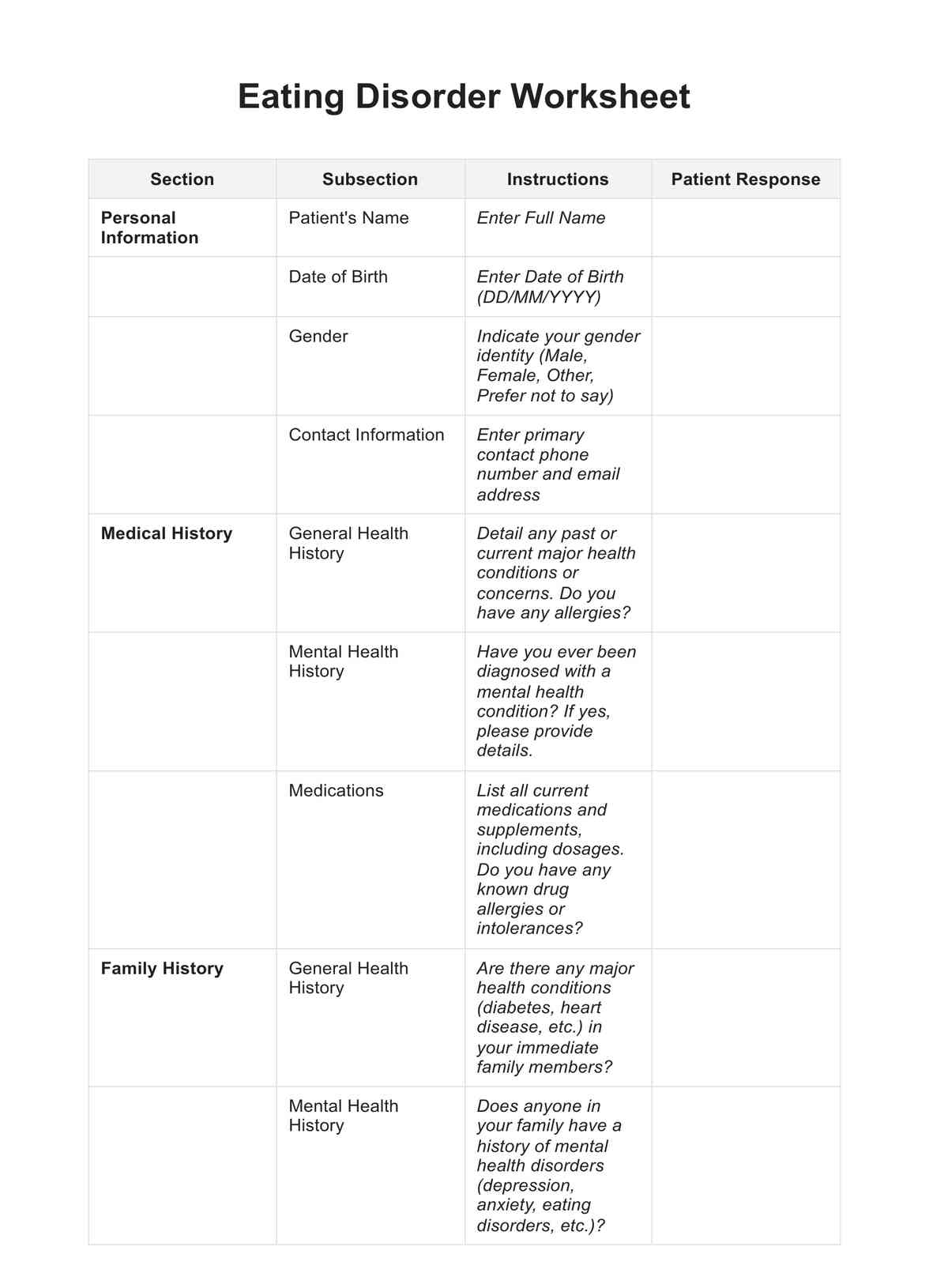
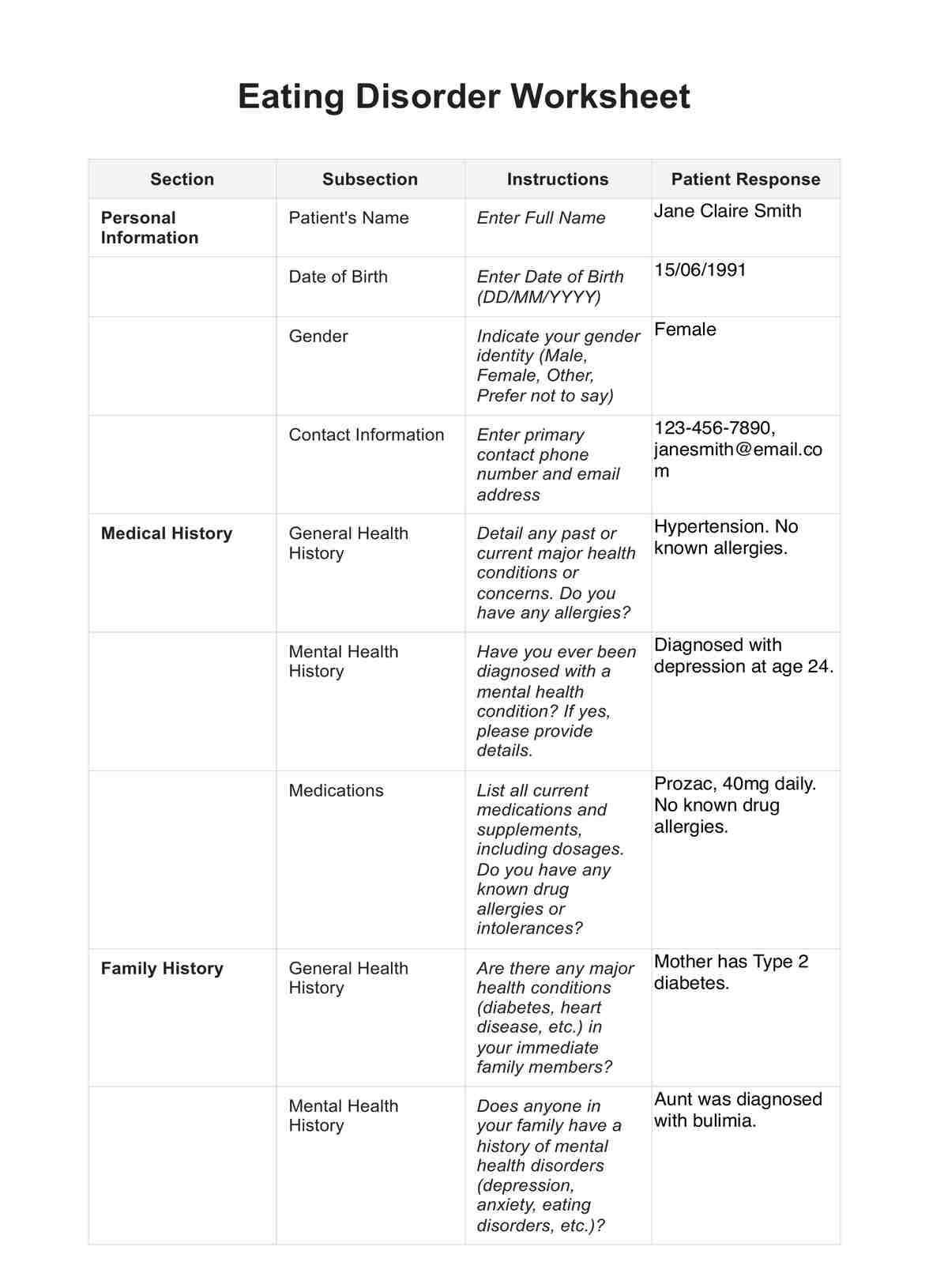

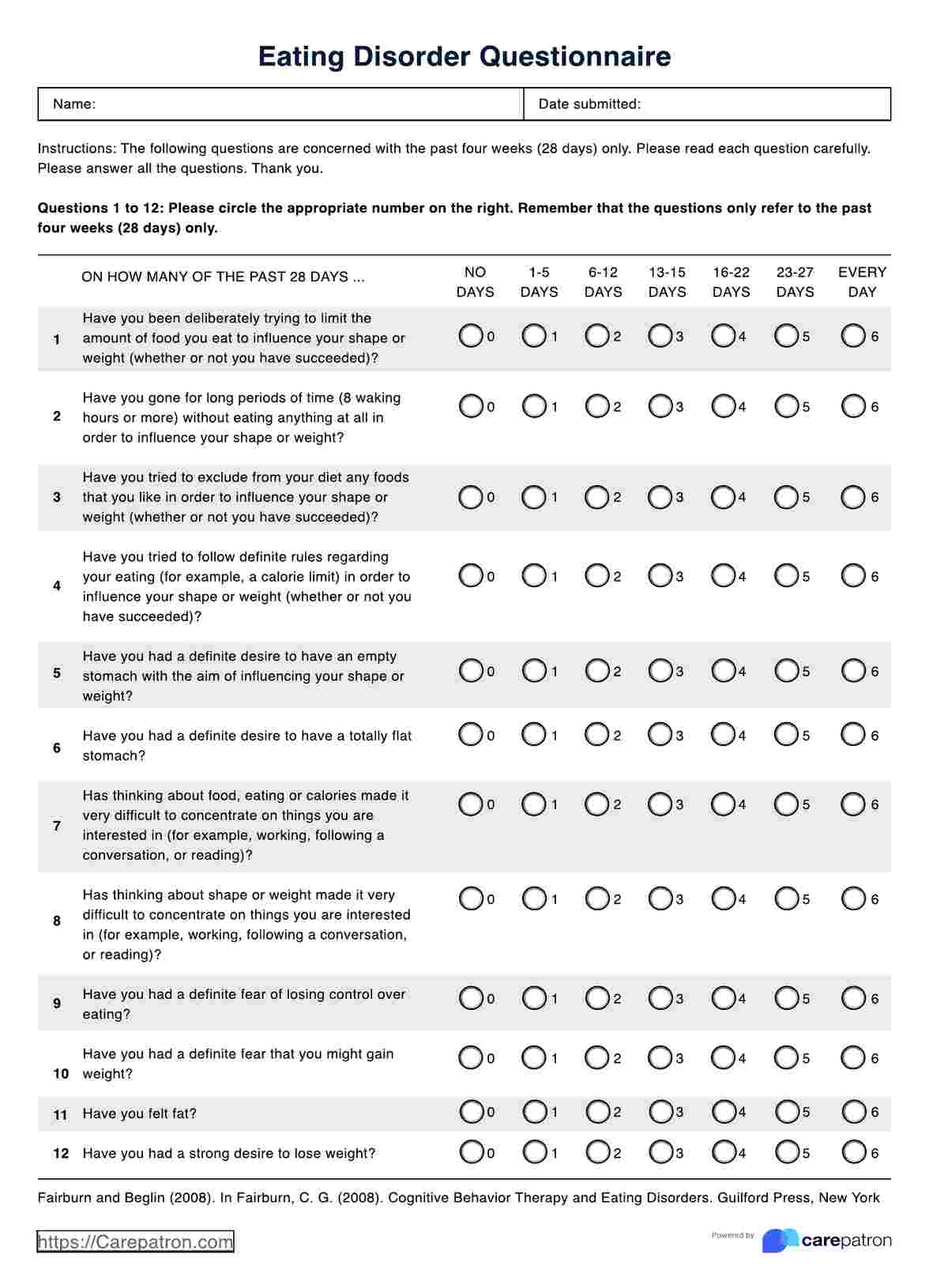













-template.jpg)





























































































